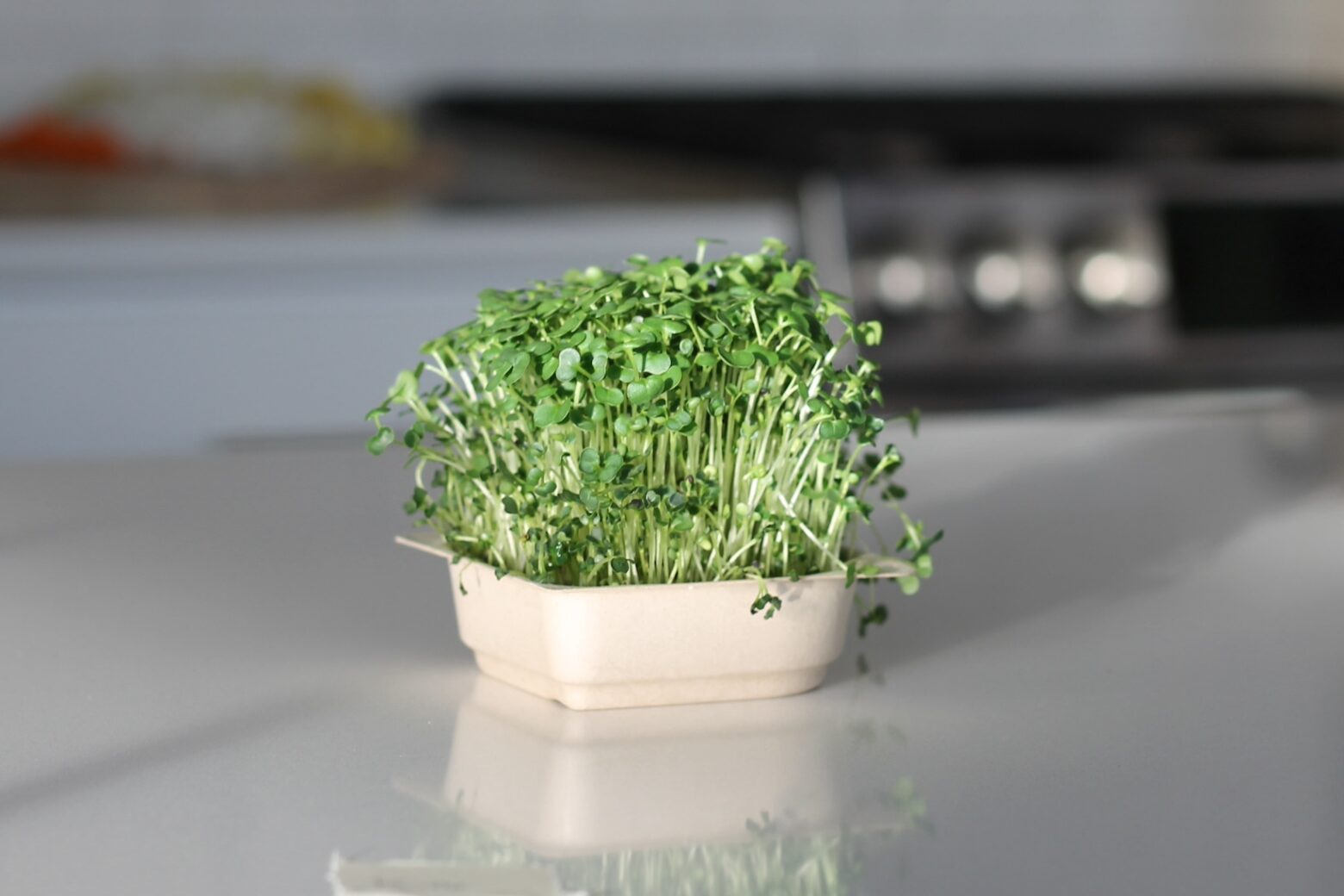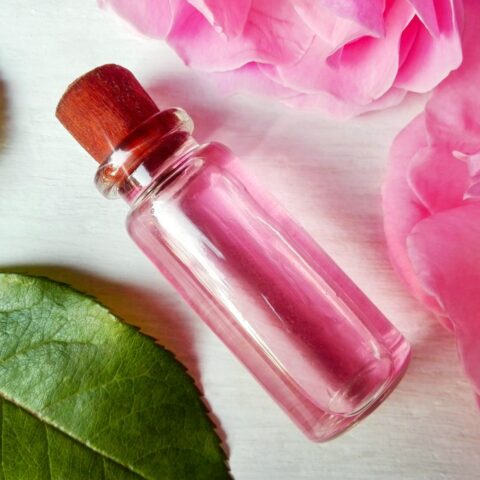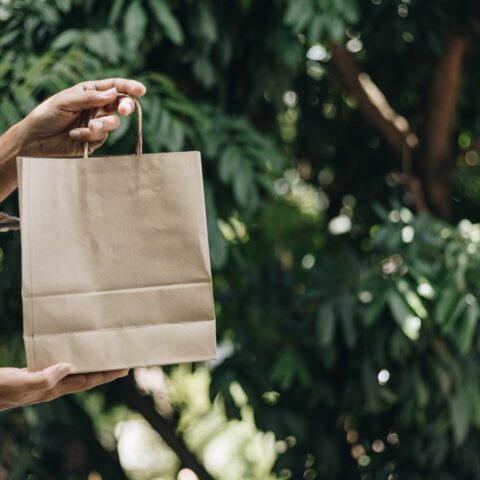Everything You Need to Know About Kale Microgreens

You’ve likely seen those tiny green shoots—formally known as microgreens—adding a touch of elegance to your dishes, whether as a garnish or tossed in a vibrant salad. But what exactly are kale microgreens, besides being incredibly small?
What Are Kale Microgreens?
Microgreens are young, tender seedlings of vegetables and herbs, and they pack a nutritional punch, containing higher levels of nutrients than more mature greens. Unlike sprouts, which germinate in water and are harvested before leaves develop, microgreens grow from sprouts and do have leaves. Once the first embryonic leaves, known as cotyledon leaves, fully form, and the first true leaves appear, the plant is considered a microgreen.
RELATED: Are Sprouted Grains Healthy?
Microgreens are favored for their ability to grow in small spaces with a quick turnaround time of 7-10 days. Research indicates that microgreens are a good source of carotenoids and vitamin E, both of which act as antioxidants, protecting our cells from damage. Notably, the Brassicaceae family of microgreens (think broccoli, daikon, and kale) boasts particularly high levels of polyphenols, carotenoids, and chlorophyll, giving them exceptional antioxidant power.
Kale microgreens have concentrated levels of vitamins A, B2, C, K; calcium; and manganese. They also have a very high concentration of sulforaphane, which is scientifically shown to have anti-cancer [2,3] and anti-inflammatory benefits. [4]
Kale microgreens have a mild, earthy taste with subtle flavors that are both sweet and bitter. With their white stems and curly green leaves, Scotch Blue Curled Kale microgreens are the most common variety, but many prefer Red Russian Kale microgreens with their pink stems and smooth leaves for their sweet taste and tender texture.
How to Shop for Kale Microgreens
Once a hard-to-source ingredient, microgreens have now “sprouted” into the mainstream. You can readily find them at grocery stores, farmers markets, and even in CSAs.
Microgreens come in two options: pre-cut in containers, ready to eat; or live, allowing you to harvest them at home. Pre-cut microgreens are usually sold by the ounce. If you’re new to microgreens, consider a sample pack or start with a small quantity. They can be found in simple bags or clamshell packaging.
When selecting kale microgreens, freshness and crispness are key. During summer, look for markets that keep their cut microgreens refrigerated. Kale microgreens left in direct sunlight will quickly wilt and spoil. Avoid any that appear limp, slimy, or unappealing. Instead, choose microgreens that are vibrant in color and stand upright. Properly stored kale microgreens will be clean, dry, and cool to the touch.
Next, inspect for mold. While the root area may have white, fluffy fibers (these are harmless root hairs called cilia), mold has a distinct spiderweb-like appearance and a musty odor. It’s often slimy and found above the soil level, potentially climbing the stems. Remember, root hairs are only on the roots and disappear when sprayed with water.
Checking for mold is crucial, as certain types can be harmful and cause illness. Mold growth can also hinder the growth of kale microgreens and often results from overly wet conditions, overcrowding, or poor ventilation.
Purchasing live kale microgreens means you’re bringing home a mini garden. The greens are still growing, with their roots intact in a growing medium. Keep them on your counter when you get home and be sure to ask for watering instructions before you leave the market.
RELATED: Grow Your Own Food with These 5 Home Garden Tips
Live kale microgreens offer the advantage of staying fresh longer, but remember, their flavor can turn bitter as they continue to grow. Check with the seller about the ideal harvest time. When ready, use scissors or a sharp knife to cut just above the soil line, harvesting only what you need for your meal. The rest can be saved for later.
Kale microgreens will typically last 10-12 days in your fridge after harvest without losing their nutritional value or flavor.
How to Grow Your Own Microgreens
Kale microgreens are surprisingly simple to cultivate right on your windowsill. In fact, studies have revealed that certain compounds are even more concentrated in microgreens grown in the comfort of your home compared to those produced in commercial settings. [5] All you need to embark on this miniature gardening adventure is a sunny spot, some potting mix, and seeds.
But if you’re looking for an even easier and more convenient way to enjoy fresh microgreens, innovative at-home growing systems have emerged, taking the guesswork out of cultivation. These devices often feature built-in lighting, automated watering, and even pre-seeded trays. Some systems even detect the temperature and humidity, making it possible for anyone, regardless of their gardening experience, to grow vibrant and nutritious microgreens year-round.
Instafarm™ is one such device, with pre-filled trays and an automated watering system that will grow luscious microgreens right every time. And because they’re grown at home and harvested at the peak of freshness (instead of wilting on a store shelf), you will be able to enjoy them at their nutritional best.
How to Prep and Cook Kale Microgreens
To heat or not heat kale microgreens? That has been the question. If you scour the internet, you’ll find many people discourage cooking microgreens because they say they lose their nutritional value when heated. However, researchers looked at the effects of heat on different vegetables and found that while some nutrients are destroyed in the heating process, [6] many antioxidants are increased [7] and some are changed to be more easily digested.
“Most love adding them to smoothies or mixing them into a salad, but they’re also great with eggs or almost any savory breakfast!”
InstaFARM™ CEO, Philip Hartman
To keep the highest amount of nutrients in your kale microgreens, pay attention to how you prepare them. Cooking at lower temperatures (such as sautéing or baking) and steaming rather than boiling will retain more nutrients in your greens. Otherwise, toss them in salads, add them to smoothies, use as a garnish on soups or veggie bowls, or eat them alone as a side salad.
References
- Xiao Z, Lester GE, Luo Y, Wang Q. Assessment of vitamin and carotenoid concentrations of emerging food products: Edible microgreens. Journal of Agricultural and Food Chemistry. 2012 Jul 30;60(31):7644–51.
- Ullah M. Sulforaphane (SFN): An Isothiocyanate in a Cancer Chemoprevention Paradigm. Medicines. 2015 Jul 17;2(3):141–56. Available from: https://www.mdpi.com/2305-6320/2/3/141/htm#B12-medicines-02-00141
- Su X, Jiang X, Meng L, Dong X, Shen Y, Xin Y. Anticancer Activity of Sulforaphane: The Epigenetic Mechanisms and the Nrf2 Signaling Pathway. Oxidative Medicine and Cellular Longevity. 2018 Jun 6;2018:1–10. Available from: https://www.hindawi.com/journals/omcl/2018/5438179/
- Bai Y, Wang X, Zhao S, Ma C, Cui J, Zheng Y. Sulforaphane Protects against Cardiovascular Disease via Nrf2 Activation. Oxidative Medicine and Cellular Longevity. 2015;2015:1–13.
- Liu Z, Shi J, Wan J, Pham Q, Zhang Z, Sun J, et al. Profiling of Polyphenols and Glucosinolates in Kale and Broccoli Microgreens Grown under Chamber and Windowsill Conditions by Ultrahigh-Performance Liquid Chromatography High-Resolution Mass Spectrometry. 2021 Dec 29;2(1):101–13.
- Zeng, Chuli. (2013). Effects of different cooking methods on the vitamin C content of selected vegetables. Nutrition & Food Science. 43. 10.1108/NFS-11-2012-0123.
- Miglio C, Chiavaro E, Visconti A, Fogliano V, Pellegrini N. Effects of Different Cooking Methods on Nutritional and Physicochemical Characteristics of Selected Vegetables. Journal of Agricultural and Food Chemistry. 2008 Jan;56(1):139–47.
Maureen Farrar
Maureen Farrar has spent more than 20 years as a writer and editor for several print and digital outlets. She writes about health, fitness and nutrition.
More About The Author




